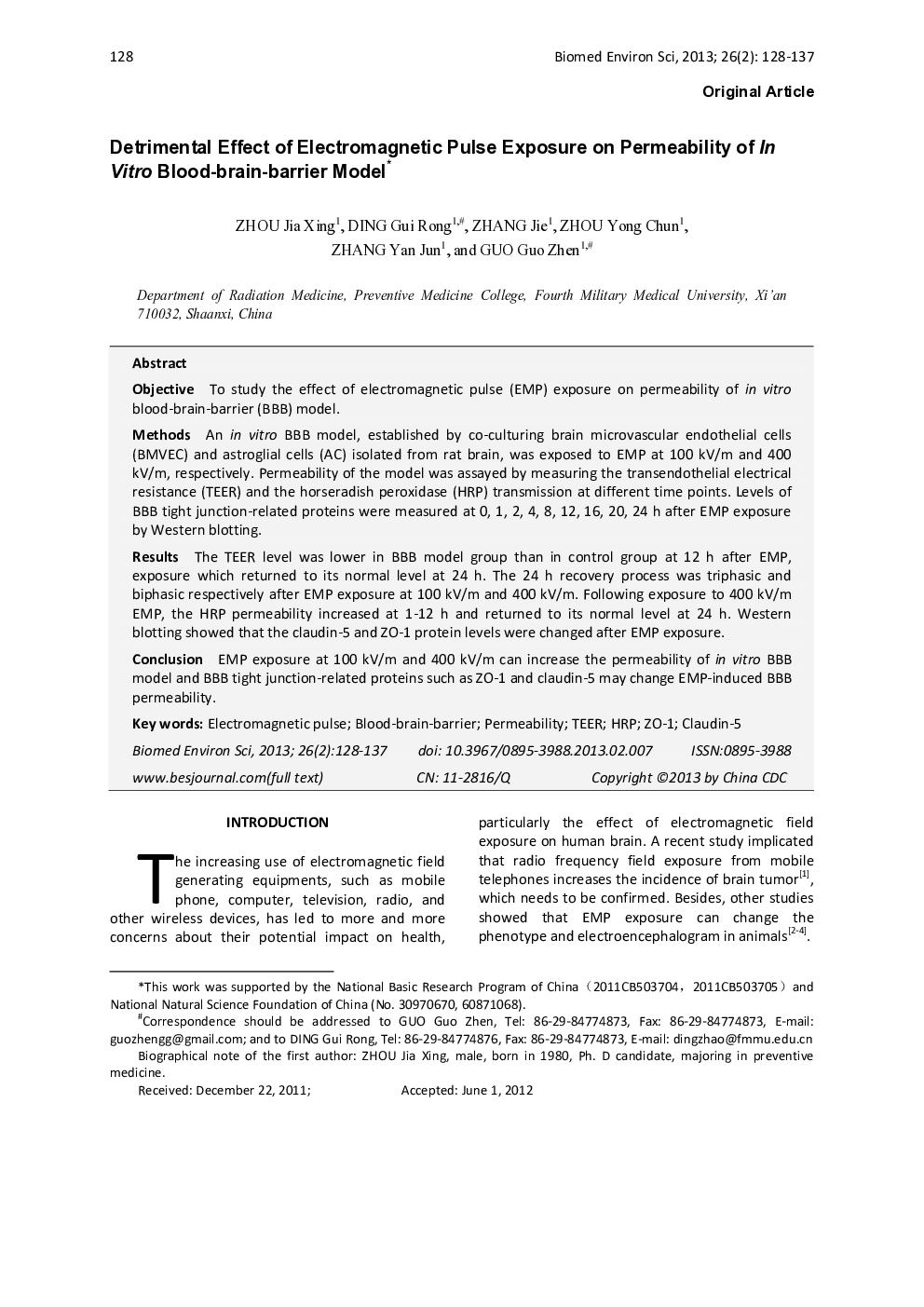| کد مقاله | کد نشریه | سال انتشار | مقاله انگلیسی | نسخه تمام متن |
|---|---|---|---|---|
| 4196332 | 1278675 | 2013 | 10 صفحه PDF | دانلود رایگان |

ObjectiveTo study the effect of electromagnetic pulse (EMP) exposure on permeability of in vitro blood-brain-barrier (BBB) model.MethodsAn in vitro BBB model, established by co-culturing brain microvascular endothelial cells (BMVEC) and astroglial cells (AC) isolated from rat brain, was exposed to EMP at 100 kV/m and 400 kV/m, respectively. Permeability of the model was assayed by measuring the transendothelial electrical resistance (TEER) and the horseradish peroxidase (HRP) transmission at different time points. Levels of BBB tight junction-related proteins were measured at 0, 1, 2, 4, 8, 12, 16, 20, 24 h after EMP exposure by Western blotting.ResultsThe TEER level was lower in BBB model group than in control group at 12 h after EMP, exposure which returned to its normal level at 24 h. The 24 h recovery process was triphasic and biphasic respectively after EMP exposure at 100 kV/m and 400 kV/m. Following exposure to 400 kV/m EMP, the HRP permeability increased at 1-12 h and returned to its normal level at 24 h. Western blotting showed that the claudin-5 and ZO-1 protein levels were changed after EMP exposure.ConclusionEMP exposure at 100 kV/m and 400 kV/m can increase the permeability of in vitro BBB model and BBB tight junction-related proteins such as ZO-1 and claudin-5 may change EMP-induced BBB permeability.
Journal: Biomedical and Environmental Sciences - Volume 26, Issue 2, February 2013, Pages 128-137